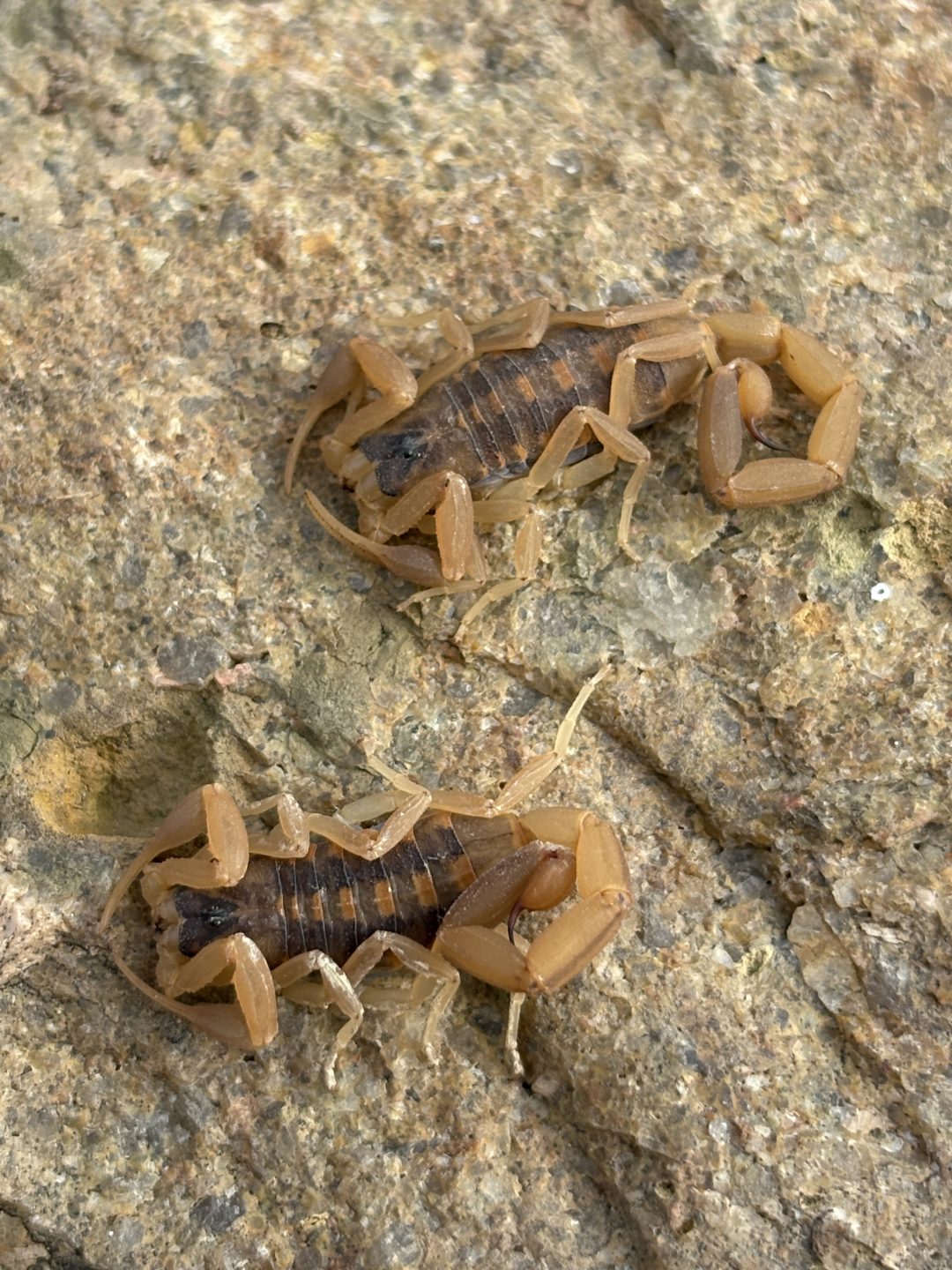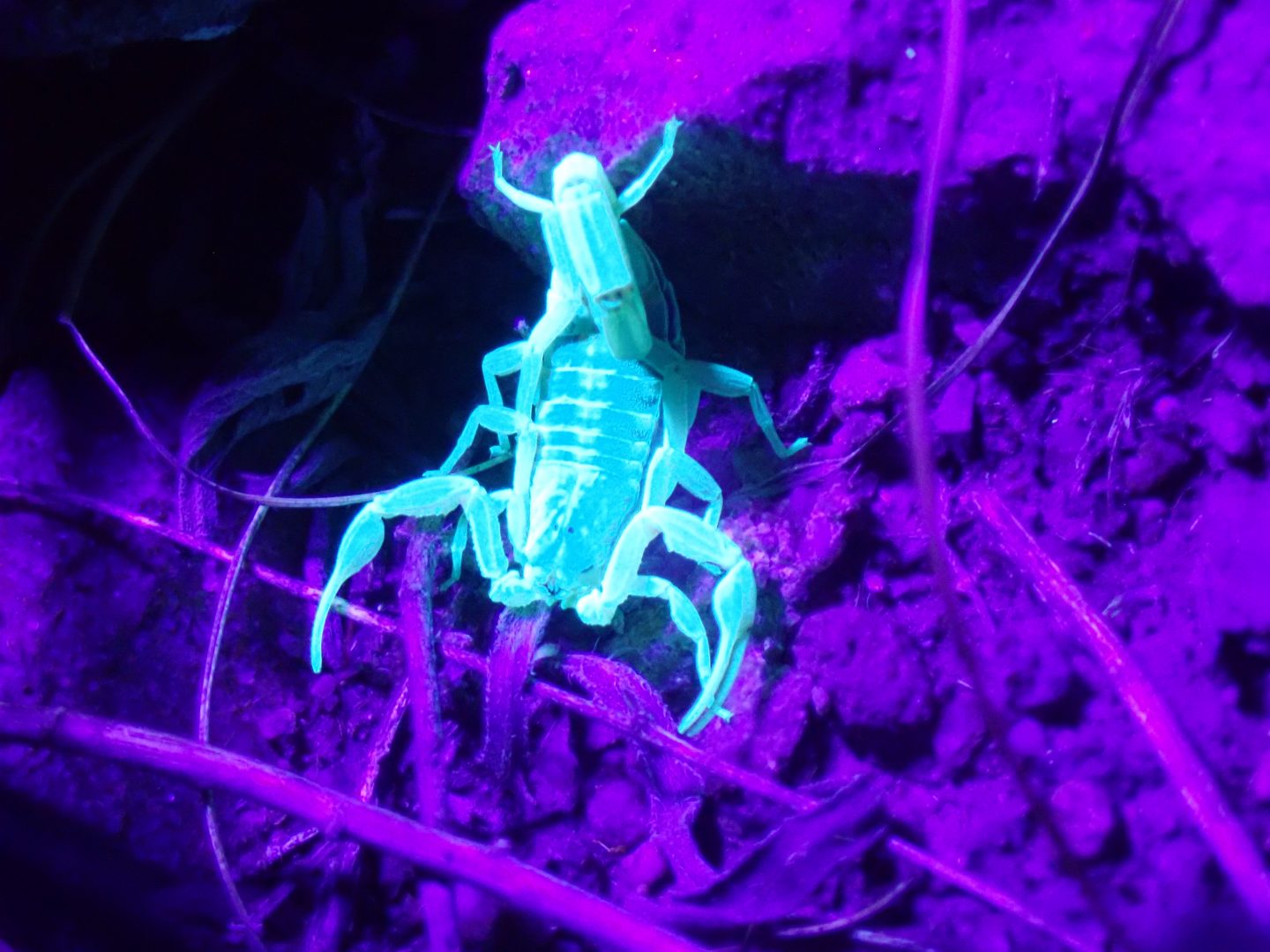
By Theo Huber and Keith Geluso
Scorpions are often associated with arid, desert environments of the south and west. Therefore, Nebraskans likely are unfamiliar that one species of scorpion inhabits parts of south-central Nebraska along the Kansas border.
The striped bark scorpion (Centruroides vittatus) was first documented in Thayer County in the 1940s, but our research team at the University of Nebraska at Kearney has recently observed them in Franklin County in upland mixed-grass prairies. This species is about 2 inches long and is tan to brown with two parallel black stripes that run along its back.
The striped bark scorpion ranges throughout much of the south-central United States, from New Mexico to Louisiana, and from northern Mexico to southern Nebraska. While commonly found in arid environments, this species also thrives in grasslands, woodlands and even urban areas. They frequent rocky outcroppings, canyon walls and even visit homes. This species is most active at night and easily observed using ultraviolet light.

In 2023, researchers at UNK began to study scorpions in Franklin County. To date, we have learned they are dormant from late October to mid-March, during which they are underground and decrease their activity. Being at the northernmost extent of their distribution, this dormancy is longer than southern populations where warmer climates either shorten or eliminate dormancy altogether.
These scorpions are known to climb on trees, shrubs and human-made structures to ambush prey or reduce predation risks. We also have observed them climbing on native forbs in prairie ecosystems. Because this species is most active at night, our current research surveys are conducted in the dark to investigate their feeding habits. We commonly find them during the day by flipping over rocks.
In much of the southern United States, this species is considered a pest due to its tendency to enter homes. While its sting is not typically harmful to humans — it is comparable to a bee or wasp — it can potentially pose a significant risk to those allergic to stinging insects. Despite this defense mechanism, these scorpions are generally not aggressive and sting only when provoked.
As we investigate further, we hope to learn more about the distribution of this species. If you know other areas with populations in the state, please reach out to us.
Theo Huber is an undergraduate student at the UNK and is conducting this research. Keith Geluso is his professor. For more information, contact gelusok1@unk.edu.
